Identification:
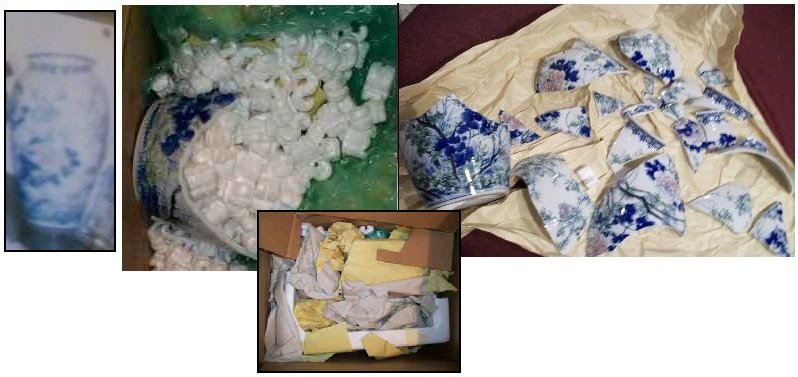
VASE SUBJECT MATTER: Tree, flowers, small bird .
SHATTERED ANTIQUE VASE
Identification:

VASE SUBJECT MATTER: Tree, flowers, small bird .
VASE COLORS : Primary colors are blue/white. Additional colors
are green, pink, rose, tan, taupe, grey, black/brown.
Possibly Dou Cai? Chinese term which means contrasting or contending
colours. It is characterised by motif outlined in underglaze blue
and completed with wash of overglaze enamels. First produced
during the Ming Period, Chenghua era, 1465-1487.
VASE HISTORY: Cynthia's late father, Earle Prentice Loomis, born 1905 in Providence, R.I. worked his way through college (Northeastern University in Boston) as driver and personal assistant to an extremely wealthy elderly couple named Mott.
The Motts grew very fond of Earle. When he finished school
and moved away they regularly exchanged letters and he visited them every summer.
When Mrs. Mott died she left several items to him, including a large oil painting
of a famous 5 gaited horse identified by brass plaque on the frame as "Fruithurst",
a vibrantly colored set of antique English plates, and an antique vase which
he had always admired, and which he (we assumed jokingly) referred to during
his own lifetime, as "the Ming".
Cynthia inherited each of the items when her father passed away.
We were heartbroken to find that although ORIGINALLY professionally
packed in an upright position, heavily cushioned and packed with great care
with Cynthia's personal supervision, the lovely vase arrived after having been
removed from its original box and subsequently improperly repacked, placed horizontally
in a used box, minus the majority of its original packing material.
(The vast preponderance of our belongings were discovered to have been removed
from their original boxes, systematically rifled through and the contents then
stuffed in used boxes). The vase arrived shattered, just one of many items found
to be damaged, destroyed or missing during the move.
We have recently received copies of inter-office paperwork noting that over forty of our original cartons had been crushed.
Below - Photo of sealed box delivered to Gurins, shown prior to opening. This, like other cartons delivered to Gurins, represented yet another unknown used box. Clear tape displays unknown printed handwriting from prior shipping customer, written in blue pen, identifying this as "Box 8 Corning Ware....unintelligible...& Other Set". Over-writing the clear tape in black marker is other unknown handwriting, now identifying contents of this used box as "Gurin vase".
Upon opening the box, broken fragments of some of the original packing materials were visible. The largest portion of the broken vase was wrapped in remnants of the original green bubble wrap, which was but one one portion of the original packing materials.
The remaining shards and fragments of the vase were wrapped in various bundles of paper and found stuffed in the same box.
Great care had been taken by the professionals at Ashe who
packed it in our presence (Phyllis and myself). It was packed in an upright
position, filled with styrofoam peanuts, bubble wrapped, immersed in styrofoam
peanuts, surrounded on all sides by rigid (cooler-like material) styrofoam,
and that rigid foam was then placed inside a protective cardboard box (not a
lightweight box) which was also immersed in styrofoam peanuts as it was placed
inside a second, larger box, and marked FRAGILE.
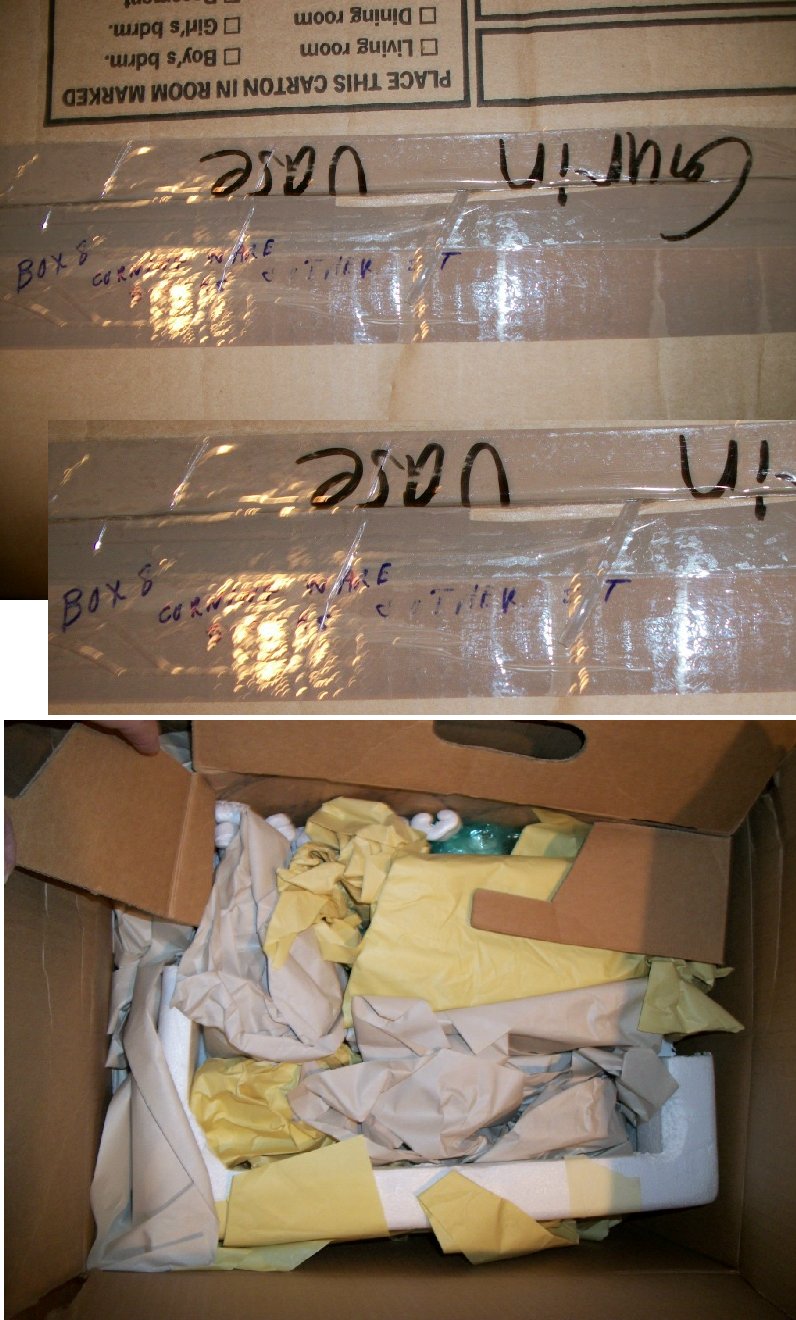
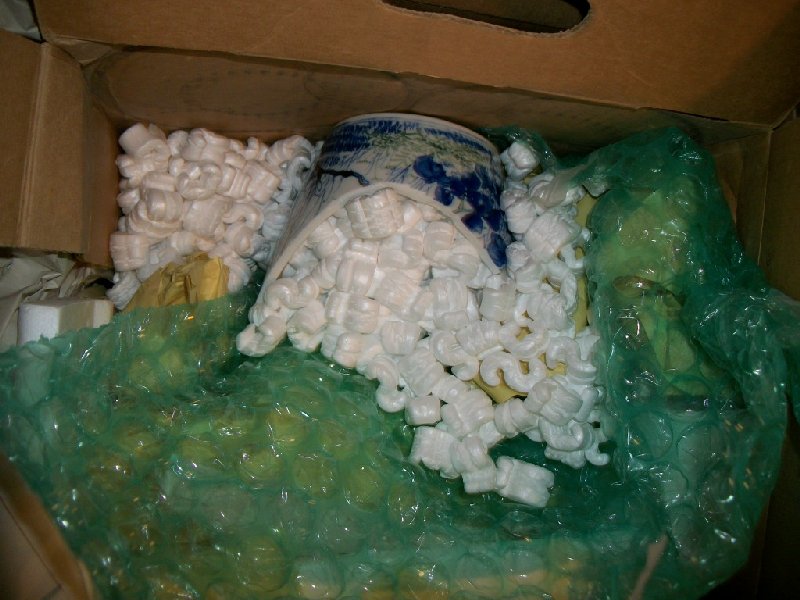
VASE IDENTIFICATION:
|
HISTORICAL EXAMPLE:
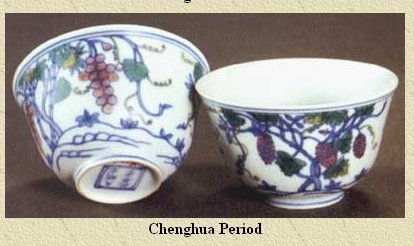 Photo Source: http://www.koh-antique.com/glossary/doucai.html Symbolism on Ming Blue and white Decoration on ceramics besides its ornamental value, also reflects the cultural aspects of the Chinese civilization. Moral values, religious belief and common wishes of the literati class and common folks are clearly and ingenuously conveyed through the motifs. Understanding the symbolism of the motifs will also help one to understand the Chinese. On the bowl pictured above, the Grape is symbolic of fecundity and the vines convey the meaning of endless. Hence, together it conveys the auspicious message of an endless number of descendants. The Peony on the vase at right (frequently paired with the Bulbul bird representing longevity) symbolizes Honour, Prosperity and Peace.
|
SUBJECT VASE 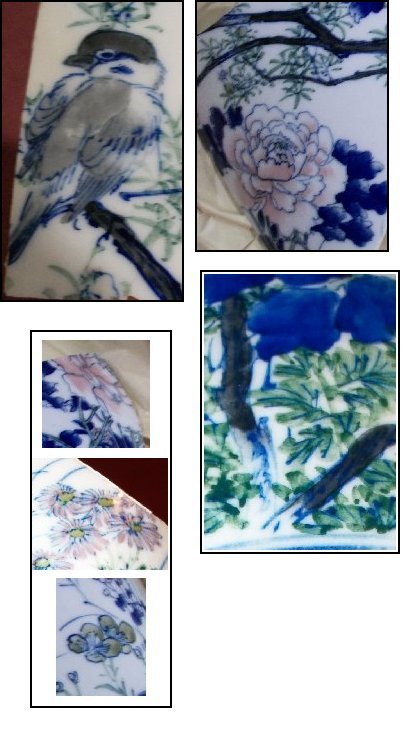
|
|
"Over the years a common question folks ask is
what kinds of Chinese porcelain and objects are you likely to find in
houses in New England? Fortunately our area is rich in dense pockets of
Asian and in particular Chinese and Japanese art. Most of it remains from
simply having been passed down from family member to family member as
estates are settled and heirs take possession quietly from generation
to generation. Its the ultimate in trickle down ownership. Nearly all
of it arrived here during the period of 1790 to 1930. 140 years of trade
with the far east interrupted a few times by the war of 1812, Civil War
and WWI. Interestingly during the early years most of what was brought
here was newly made for the European and American markets. By the late
19th and early 20th C. tastes had broadened around the world including
New England and the objects of desire from China and Japan became much
earlier examples, from the early Qing Dynasty Circa 1720 back to the Tang
Dynasty Circa 800 AD and before. In Europe their period of trade with
Asia is even a longer period of time starting nearly 300 years earlier
during the Ming Dynasty around 1517 AD. By 1602 with the formation of
the VOC the Dutch East India Company it all went into high gear like never
before. With all this, after thousands of ships over hundreds of years,
carrying millions of tons of cargo its no surprise thousands of non consumable
items are left in tact, i.e. Silks, Jades, Porcelain, Carvings and paintings.
As famillies downsize they trickle into the market, we're very glad they
do." -
|
01/02/13 - A representative
of Golden Lotus Antiques in San Mateo, California
inspected the photographs on this page and has advised that in their opinion
the origin of the vase is definitely China, the era appears to be late Ming
Dynasty (1368-1644) or early Qing Dynasty, which
opinion is in keeping with the family history of the piece.
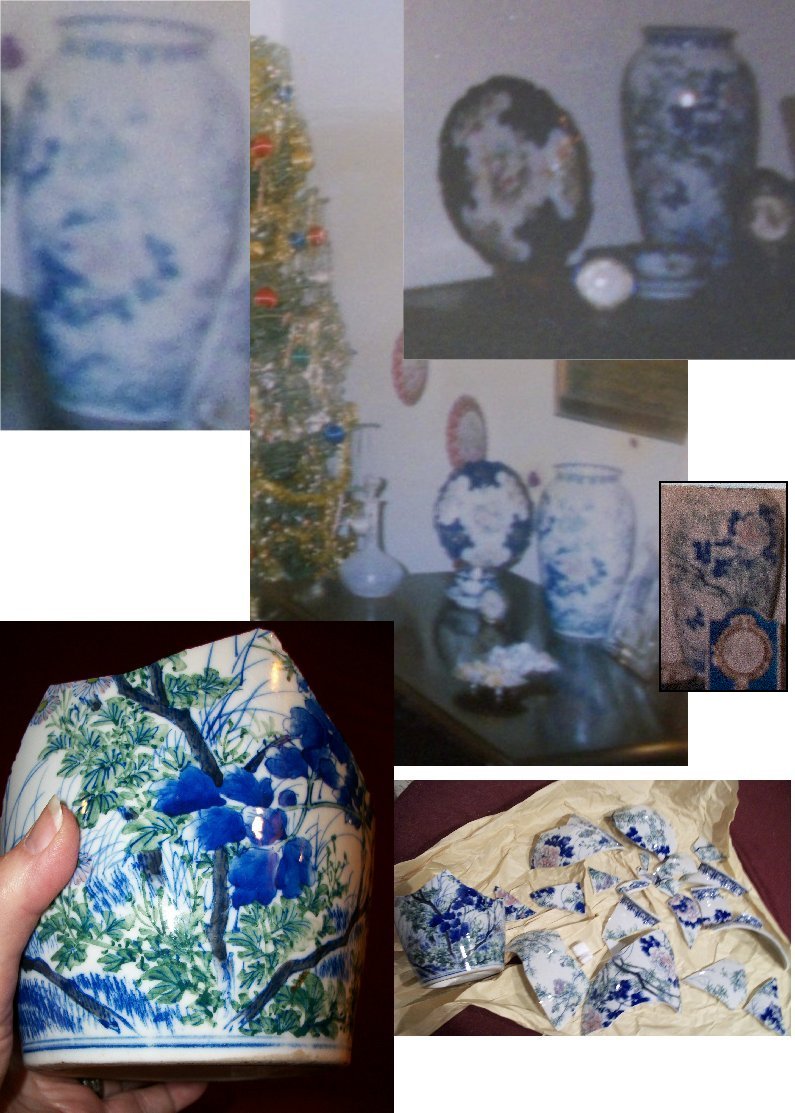
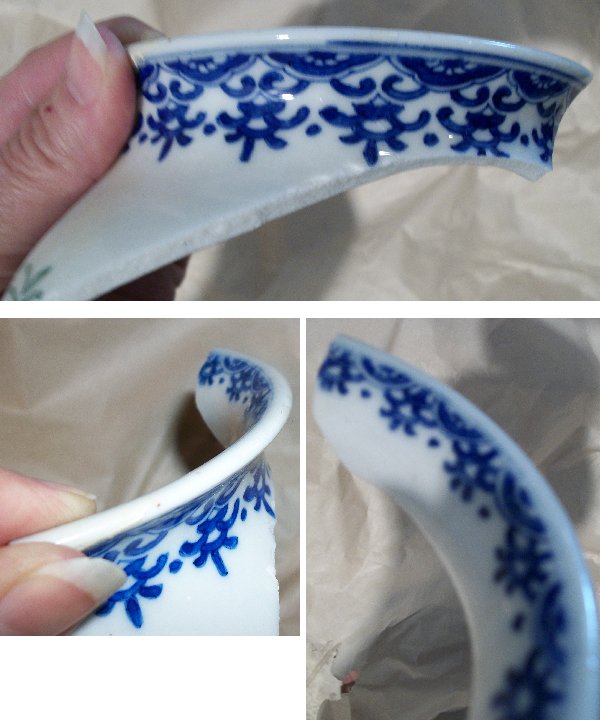
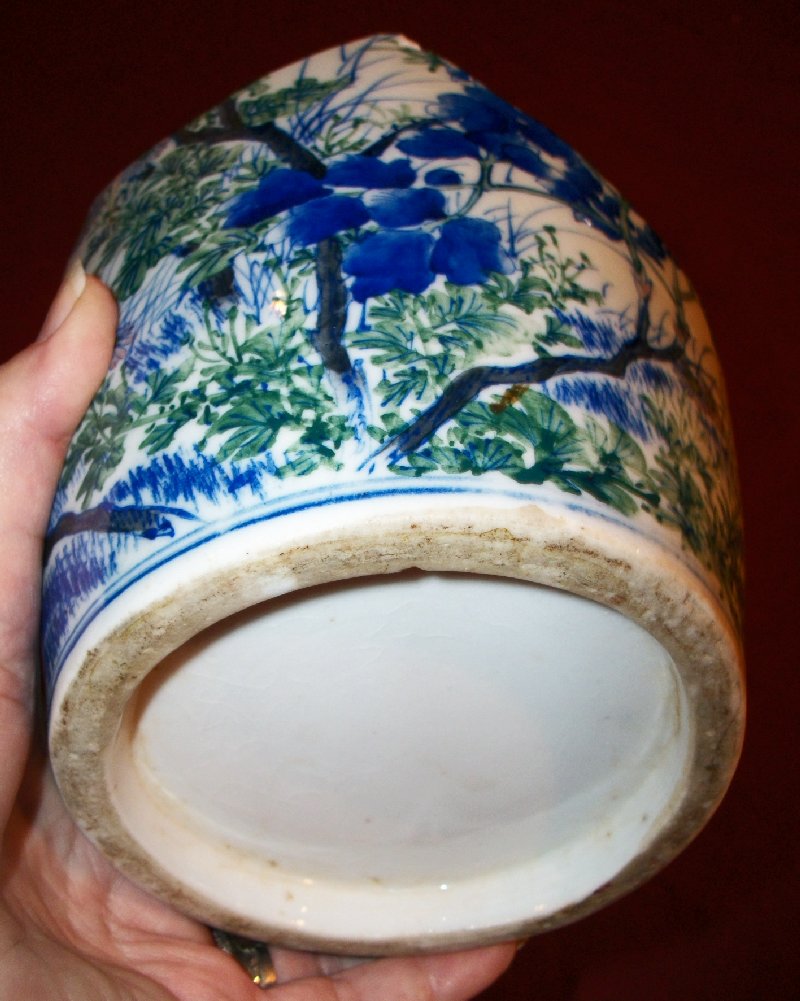
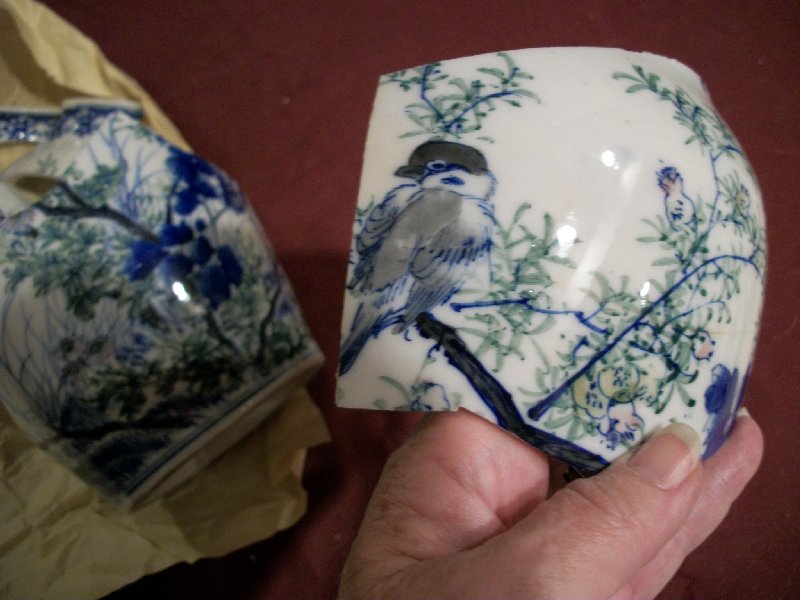
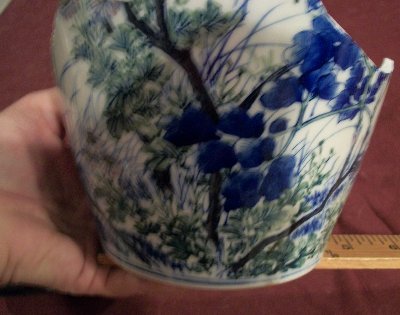
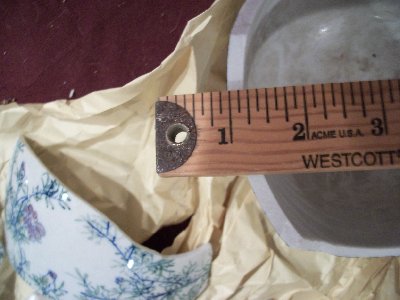
Base measures 4.5" . Thickness of sides measures nearly 1/4"
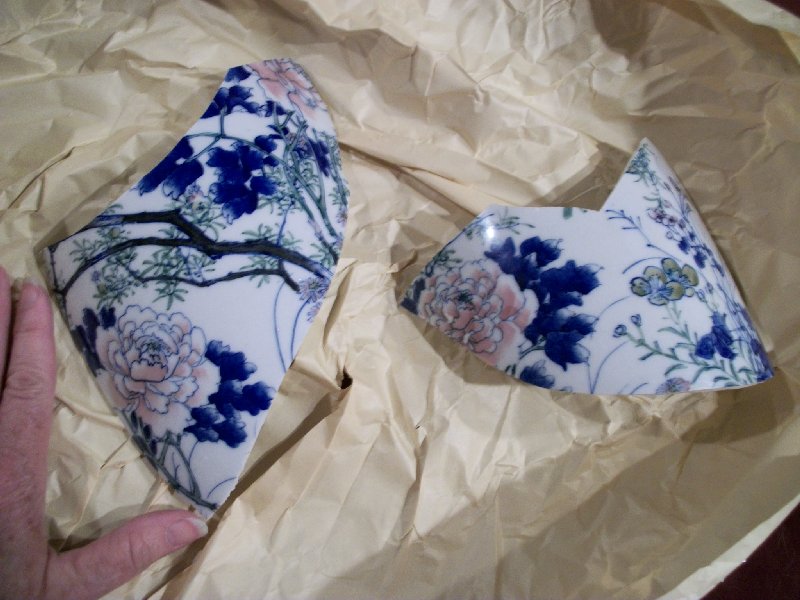
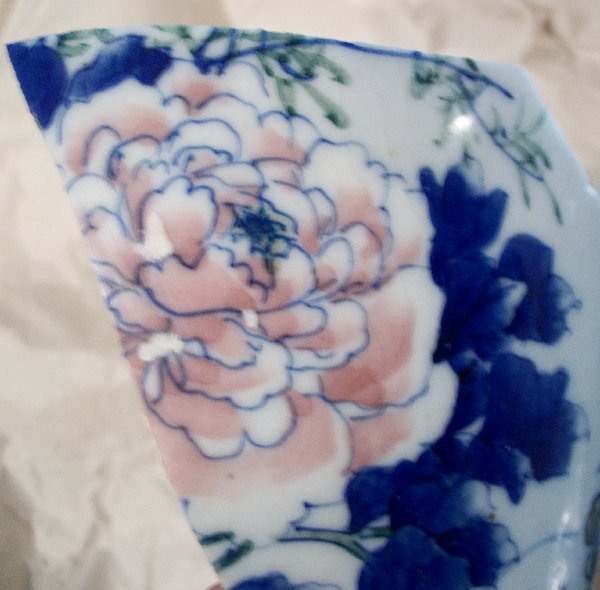
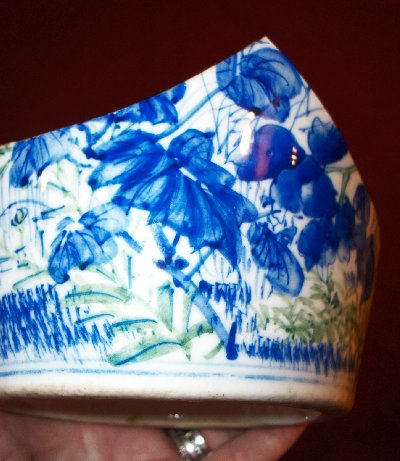
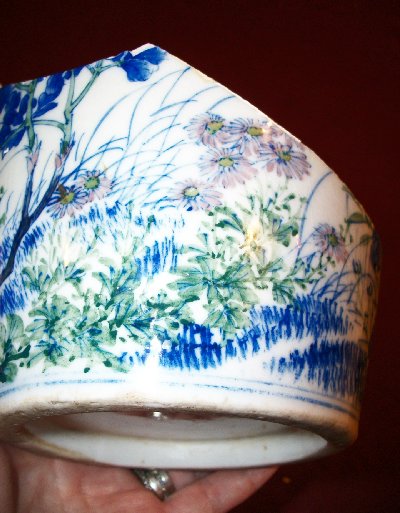
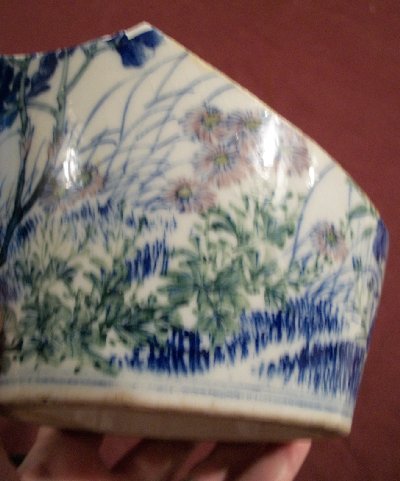
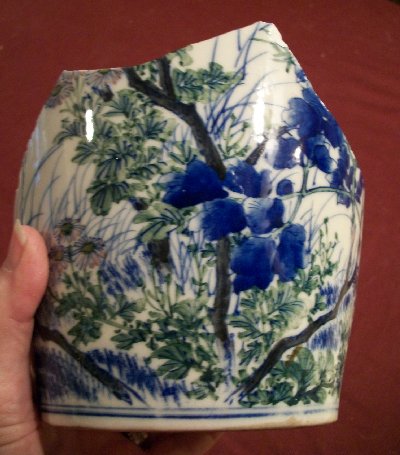
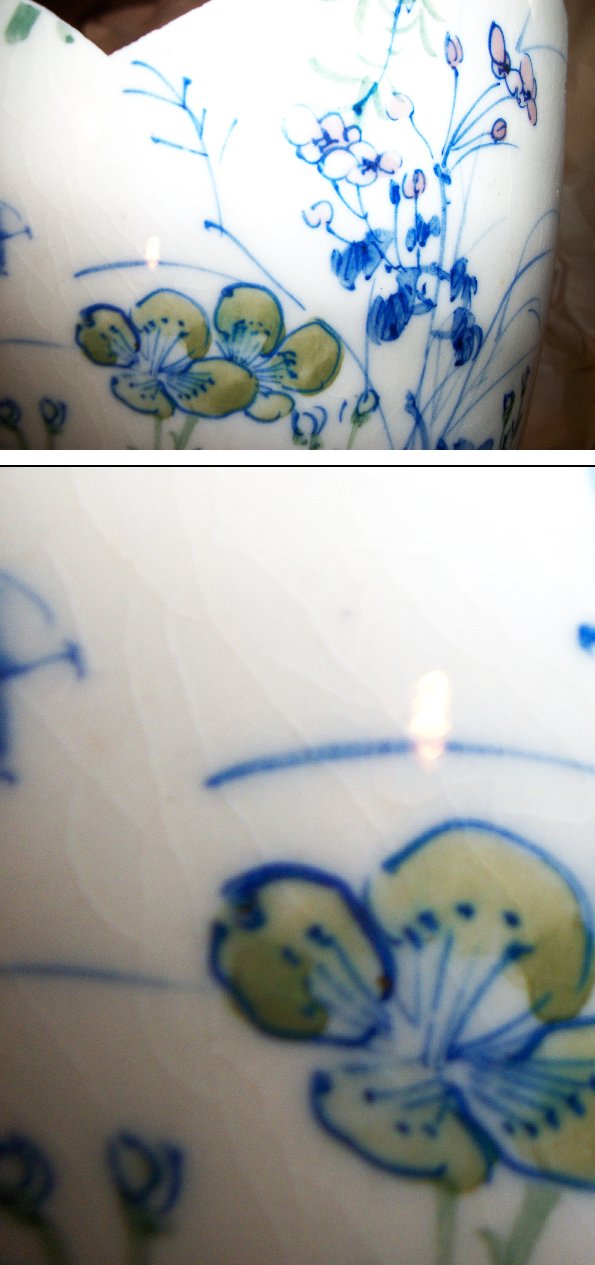
SOTHEBY'S SALE RESULTS:
http://browse.sothebys.com/?count=250&hp=&hpc=&i=1&omit=BI|WDN&q=chenghua&sla=1&slaform=1&u1=q